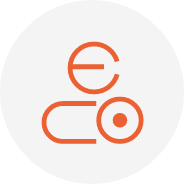In modern manufacturing, error-proof tightening is a critical link for ensuring product quality and production reliability. To achieve effective tightening error-proofing, one cannot rely solely on regulating operator actions; instead, a holistic view of the entire production flow is required. Below are the key areas that need attention:

1. Incoming-Material Control
The quality of incoming materials is the foundation of tightening error-proofing. Fasteners entering the tightening system must strictly meet specification requirements; otherwise, even the most advanced tightening tool cannot guarantee assembly quality. Therefore, incoming control must be reinforced to ensure the quality of screws, nuts, and other fasteners. For example, length-detection systems can identify whether a screw’s length matches design requirements, preventing tightening problems caused by screws that are too long or too short. Only when incoming materials are verified as correct can subsequent tightening processes be reliably safeguarded.
2. Equipment Control
Equipment is the core tool for tightening error-proofing. Selecting the right tightening tool is essential, and Danikor’s intelligent tightening tools excel in this regard. They feature high-precision torque control and can be paired with multiple monitoring strategies to effectively detect tightening anomalies such as floating (incomplete seating), thread stripping, or repeated tightening. Additionally, Danikor tools capture and store tightening data and curves, providing powerful support for later traceability and analysis. These capabilities make the tightening process more reliable, ensuring tightening quality even in complex and variable production environments.
3. In-Process Monitoring
Monitoring the tightening process is the key to error-proofing. By leveraging high-precision torque control and diverse monitoring strategies, all relevant parameters can be tracked in real time. Danikor intelligent tightening tools, for instance, provide real-time feedback on tightening status and issue alerts when anomalies are detected, prompting operators to take immediate action. Furthermore, the collection and analysis of tightening curves are crucial monitoring methods; by examining these curves, one can intuitively judge whether the tightening process is normal and spot latent issues early.
4. Position & Sequence Control
Correct assembly position and sequence directly affect product quality. To prevent errors in either, Danikor articulated arms and position encoders can be employed together. The articulated arm offers stable support, ensuring consistent positioning of the tightening tool during operation, while the position encoder identifies the exact screw-installation location, preventing quality issues caused by incorrect assembly sequences. Even when operators are not paying close attention, this combined approach effectively eliminates assembly mistakes.
5. Data Traceability & Analysis
Data traceability and analysis are vital safeguards for tightening error-proofing. Danikor intelligent tightening tools continuously collect and store tightening data and curves. These data can later be used for quality traceability and process optimization. By establishing a comprehensive traceability system that links tightening data to production batches, equipment IDs, and operator information, problems can be rapidly located and corrective actions taken when issues arise. At the same time, ongoing analysis of tightening data helps uncover hidden process weaknesses, allowing tightening parameters to be refined and product quality to be improved continuously.
6. Continuous Improvement
Error-proofing in tightening is an ongoing process. Enterprises should perform regular maintenance and calibration of tightening equipment to ensure long-term accuracy and reliability. Meanwhile, tightening processes should be continuously optimized based on data-analysis results to enhance process robustness. Establishing a feedback mechanism that encourages operators to propose improvement suggestions is also an effective way to keep the tightening error-proofing system evolving.
Error-proofing in tightening requires a comprehensive approach that spans incoming-material control, equipment selection, process monitoring, position & sequence control, data traceability & analysis, and continuous improvement. Through these measures, tightening-related errors can be effectively reduced, ensuring both product quality and production reliability. Danikor’s intelligent tightening tools and articulated arms play a significant role in tightening error-proofing, providing enterprises with dependable solutions.











